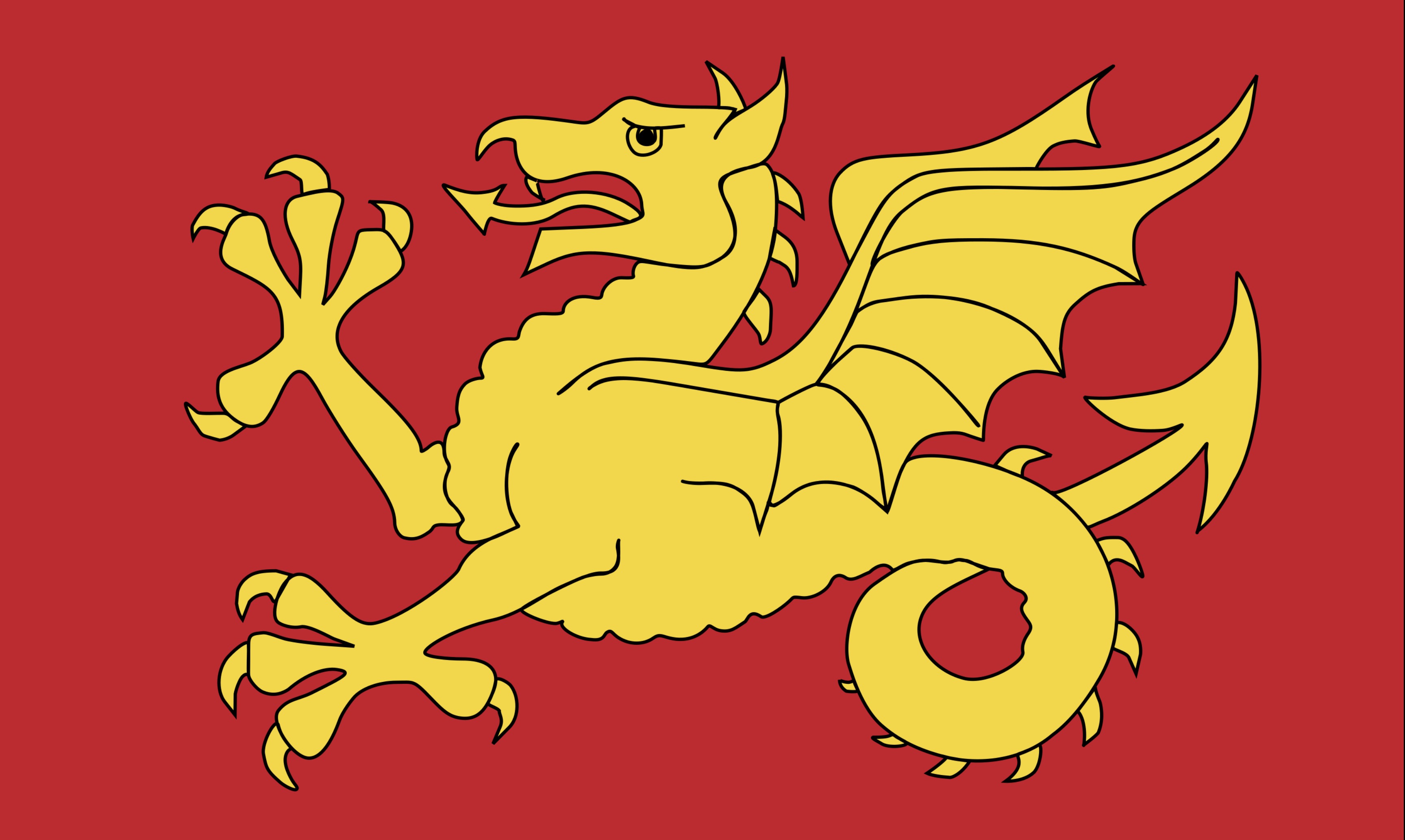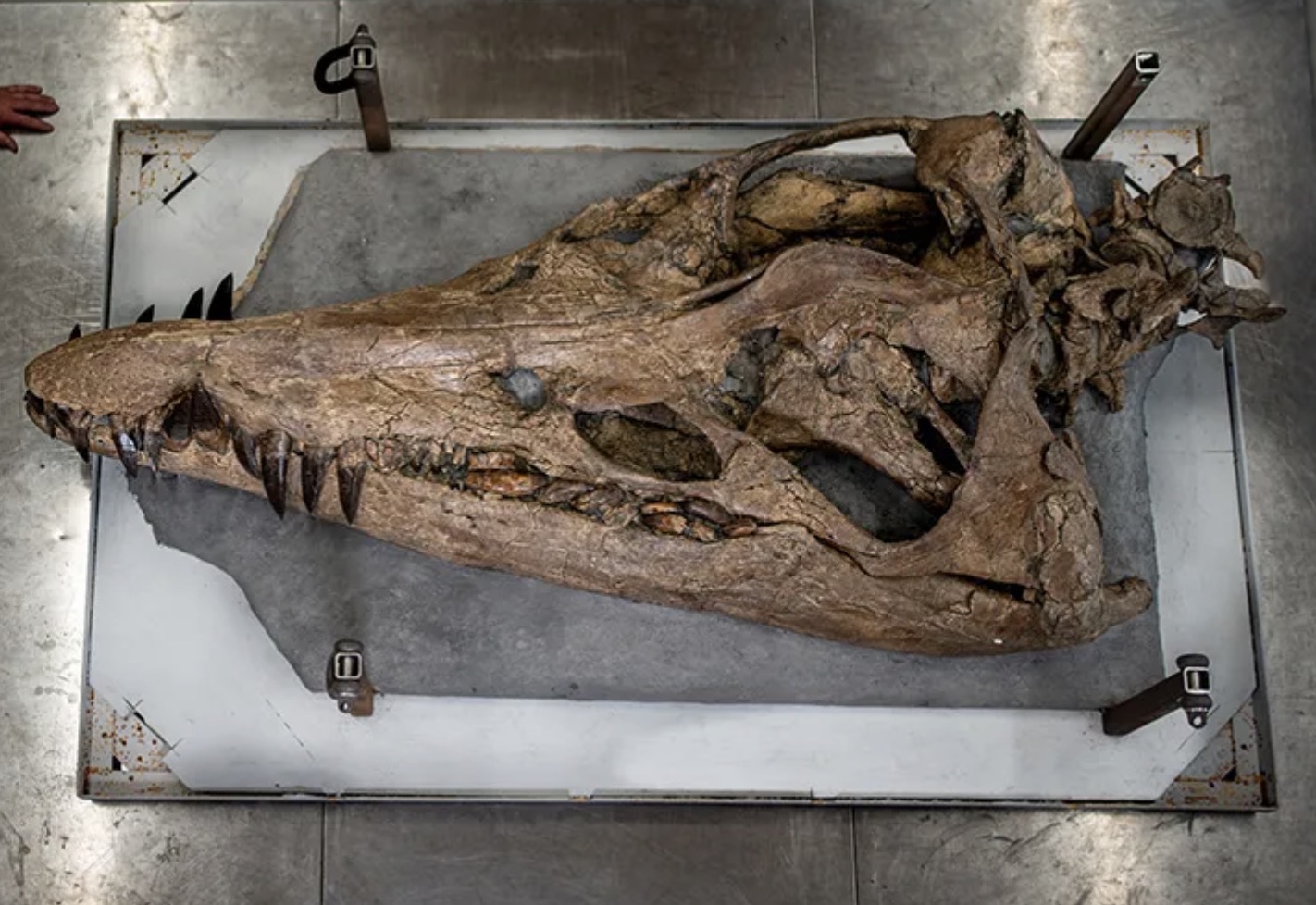| Issue December-11 | ||
 |  |
|
| ·Home ·Politics ·News ·Sport ·Life ·Culture ·World ·Essays ·About | ·Archive | |
| ||||||||||||||
Amazing fossil found at Kimmeridge on the Jurassic coast |
 |
| The skull of a colossal sea monster has been extracted from cliffs near the village of Kimmeridge on Dorset's Jurassic Coast. The skull belongs to a pliosaur. Pliosaurs are ferocious marine reptiles that terrorised the oceans about 150 million years ago. The skull is 2metres long and supposedly one of the most complete specimens of its type ever discovered. The finding will be featured in a special David Attenborough programme on BBC One on New Year's Day 2024 When the specinmen was fisrt dsiplayed it was obvious that this pliosaur is huge and beautifully preserved. Palaeontologist Steve Etches says "there isn't a specimen anywhere else to match it". "It's one of the best fossils I've ever worked on. What makes it unique is it's complete," he told BBC News. He stated "The lower jaw and the upper skull are meshed together, as they would be in life. Worldwide, there's hardly any specimens ever found to that level of detail. And if they are, a lot of the bits are missing, whereas this, although it's slightly distorted - it's got every bone present." To imagine its size you must remember the skull is longer than most humans are tall. It has 130 teeth, those at the front are long and razor sharp, they could kill with a single bite. The back of each tooth is marked with fine ridges. These would have helped the beast to pierce the flesh and then quickly extract its dagger-like fangs, ready for a rapid second attack. This is an interesting detail. It was probably the apex predator in the ocean at its time. The ultimate killing machine, 10-12m long, and with four powerful flipper-like limbs to propel itself at high speed. Dr Andre Rowe from Bristol University stated "The animal would have been so massive that I think it would have been able to prey effectively on anything that was unfortunate enough to be in its space, I have no doubt that this was sort of like an underwater T. rex." It probably fed on other reptilesincluding its long-necked cousin, the plesiosaur, and the dolphin-like ichthyosaur. Some fossil evidence reveals that it would have even feasted on other passing pliosaurs. Steve Etches' friend and fellow fossil enthusiast Phil Jacobs came across the tip of the snout of the pliosaur lying in the shingle on the beach. Because it was too heavy to carry, he went to fetch Steve and the pair rigged a makeshift stretcher to take the fossil fragment to safety. Of course the want to find the rest of the animal. They have employed a drone to survey the towering cliff face to ascertain a likely location. They abseiled down from the top of the cliff to get closer. At 15m above the beach a difficult job excavating. To judge the size of the muscles palaeobiologist Prof Emily Rayfield has already examined the large circular openings at the rear of the head. They tell her about the size of the muscles operating the jaws of the pliosaur, and the forces generated as its mouth snapped shut and crushed its prey. It is estimated that the force comes out at about 33,000 newtons. In comparison saltwater crocodiles clock in at 16,000 newtons. She stated too "As for feeding strategies: crocodiles clamp their jaw shut around something and then twist, to maybe twist a limb off their prey. This is characteristic of animals that have expanded heads at the back, and we see this in the pliosaur." The snout of the animal is dotted with small pits that may have been the site of glands to help it detect changes in water pressure made by prospective prey. And on its head is a hole that would have housed a parietal, or third, eye. Lizards, frogs and some fish alive today have one of these. Not really an eye but a light sensitive organ that might have helped in locating other animals, especially when the pliosaur was surfacing from deep, murky waters. Steve Etches will put the skull on display next year at his museum in Kimmeridge - the Etches Collection. It has some vertebrae poking out at the back of the head but trailing off after just a few bones. They are a tantalising clue that more of the fossil might still be in the cliff. Steve is keen to finish what he started. He told the BBC "I stake my life the rest of the animal is there, and it really should come out because it's in a very rapidly eroding environment. This part of the cliff line is going back by feet a year. And it won't be very long before the rest of the pliosaur drops out and gets lost. It's a once in a lifetime opportunity." -pw- with data from the BBC |
|